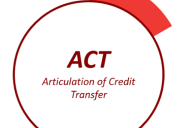You have /5 articles left.
Sign up for a free account or log in.
What if everything we “know” about transfer credit loss is wrong? New research analyzing 13,000-plus graduates reveals a shocking truth that should change how we think about excess credits.
This column is the first part of a two-part series based on “Characterizing Extra Credit Accumulation by Undergraduate Students” by Tushar Ojha and Don Hush, published in IEEE Access. The research analyzed over 13,000 graduates from the University of New Mexico to understand patterns in student credit accumulation.
The Assumption We All Make
Every transfer credit evaluator has processed that file—the one with 75 community college credits from multiple institutions, a major change and the inevitable outcome of 30-plus extra credits at graduation. The standard explanation? Transfer credit loss. Credits that don’t transfer or don’t apply to the new major.
It’s logical. It’s widely accepted. According to new research from the University of New Mexico, it’s largely incorrect.
What If Everything We ‘Know’ Is Backward?
The research analyzed over 13,000 graduates and found something that should fundamentally change how we think about transfer credit evaluation: 98.5 percent of transfer credits are successfully transferred (the authors use the term “articulated”).
More importantly, transfer and nontransfer students accumulate extra credits at nearly identical rates. If transfer credit loss were the primary driver of excess credits, we’d expect to see significant differences between these populations. We don’t.
The Real Story: It’s Not About Credits That Don’t Count
The researchers discovered that we’ve been asking the wrong question. Instead of “Why don’t these credits count toward the degree?” we should be asking, “Why are students earning so many credits that do count but aren’t needed?”
The study breaks extra credits into three categories:
- Unusable-earned: Credits students successfully completed with passing grades but that don’t count toward any requirement in their chosen degree program
- Unusable-unearned: Credits from courses that students attempted but didn’t successfully complete—including failed classes, remedial coursework and repeated attempts
- Excess credits: Count toward requirements but exceed what’s needed
Note: The researchers also identified and removed surplus credits—credits that weren’t really intended for the current degree—before analyzing these categories.
The surprising finding? Over 90 percent of students graduate with excess credits, while fewer than half have unusable credits. The problem isn’t credit acceptance—it’s credit management.
What This Means for Daily Operations
Transfer evaluations may not be a bottleneck we thought for all institutions. The challenge lies in helping students understand which credits they actually need for their degree versus which ones simply count toward requirements.
The pattern reveals systemic issues beyond transfer. Students consistently accumulate about three extra credits per semester throughout their entire degree journey, not just at transfer points. This steady accumulation pattern occurs regardless of when in the academic sequence it happens, suggesting the problem extends far beyond transfer credit evaluation.
Timing reveals early-intervention opportunities. The fraction of students accumulating extra credits is highest in the first two semesters (about half of all students), then gradually decreases over time. However, even in the final semester, students continue accumulating extra credits. This pattern suggests that:
- Early intervention is critical. The highest accumulation rates occur when students are establishing their academic foundation.
- Ongoing support is needed. Extra credit accumulation continues throughout the degree, indicating a need for sustained academic advising rather than one-time interventions.
- The issue is systemic. Since both transfer and nontransfer students show identical patterns when properly aligned, this isn’t a transfer-specific problem but a broader institutional challenge.
Implication: Institutions should shift resources from intensive transfer credit evaluation toward comprehensive degree planning support that begins early and continues throughout the student’s academic journey.
The Bottom Line
That transfer student with 30 extra credits? The excess probably wasn’t caused by transfer credit loss. More likely, it resulted from program changes, financial aid requirements, prerequisite courses that didn’t apply and the natural accumulation of applicable credits over time.
This shift in understanding changes how we can most effectively support students—and raises important questions about how academic advisers can use these insights to improve student outcomes.
In Part 2, we’ll explore how academic advisers can leverage these research findings to help students make more informed decisions about their academic pathways, particularly given the finding that excess credits dominate over unusable credits in most cases.


